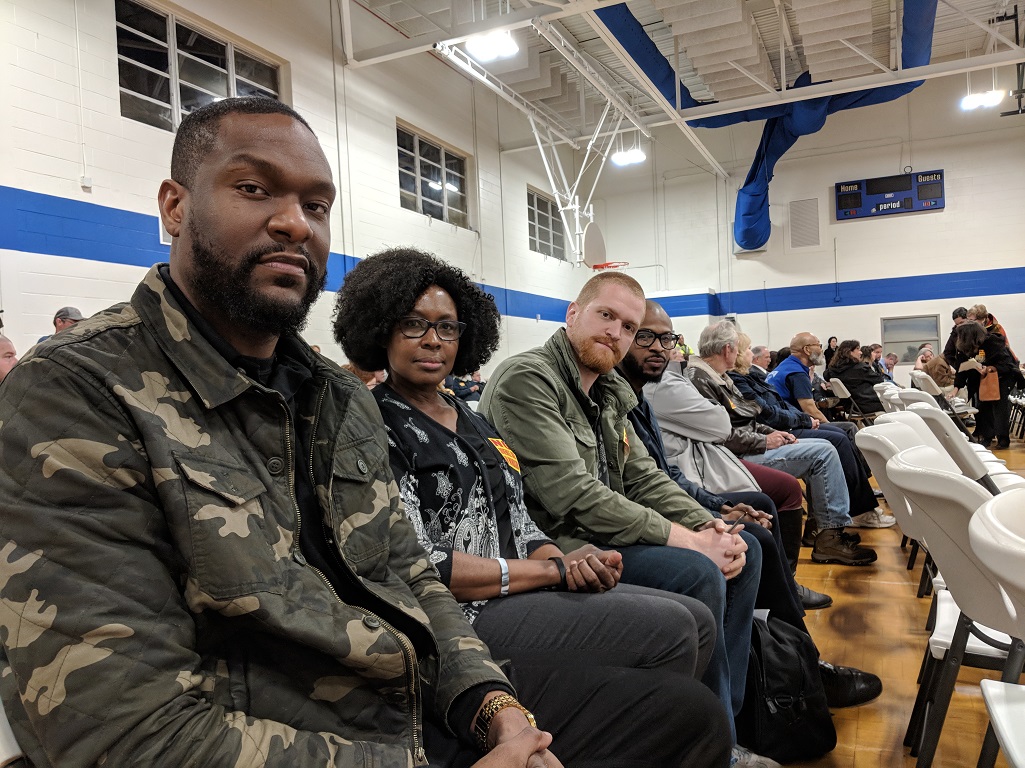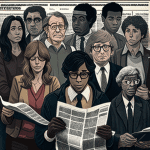Virginia must find a way to involve local communities in efforts to rehabilitate youth caught in the juvenile justice system, says RISE For Youth Strategic Engagement Director James Braxton.
It was a quiet and introspective ride for the RISE for Youth team on the way to Isle of Wight County on April 18, 2019. We were attending the final Board of Supervisors meeting for the vote on a proposed Juvenile Justice Correctional Center that would, if approved, be built in the county.
We were confident in the rapport we had built with the community advocates of the town of Windsor. We were confident in our efforts to impact the decision the Board Of Supervisors were about to make. But we were contemplating words and actions of board members who seemed to be ignoring the voices of their constituents. This was a historical moment for our state.
I remember we arrived at the meeting a few minutes late to a packed gym of concerned families and advocates. As we took our seats, the board was literally in the process of taking the vote. All I heard was “yes, yes, no.” Then the citizens stood and erupted with cheers.

That last “no” was the final vote we needed to win the decision for the people, and it was an amazing feeling. As I reflect on what this decision meant for our RISE team and the impacted youth and families of Virginia, I can’t help but think of all the possibilities for true transformation.
I recall a life changing conversation I had years ago with a friend and colleague, Mr. Richard Ward. Richard was sharing with me a discussion he had with another gentleman about human ingenuity. I admit, I wasn’t familiar with the term “human ingenuity” at the time of our conversation, but it was the way Richard explained it that compelled me.
History teaches us that on December 17, 1903, Wilbur and Orville Wright made four brief flights at Kitty Hawk with their first powered aircraft. The Wright brothers were credited for inventing the first successful airplane. Try to imagine the Wright brothers lack of technology, exterior and interior design capabilities, and their lack of state-of-the-art building materials.
Now think about how far we’ve come. We literally went from the Flintstones to Airforce One.
Inevitably, evolution and human ingenuity have allowed us to fly comfortably with some of the most extravagant amenities you can imagine, from full size kitchens, to offices, music studios and bedrooms — all on a single airplane. This evolution changed the way we travel, and as a result, has in many ways brought greater peace and inspiration into our world. Air travel has increased our opportunities for exposure, allowed us to enhance our capability for international collaboration, and so many other benefits.
One definition of human ingenuity is: the way in which human minds have influenced how we think, work, play, construct and conduct friendships and other relationships, interact with each other, find solutions to problems, cause problems, transform things, and rationalize thought. As it relates to the evolutionary work of juvenile justice reform in Virginia, we at RISE for Youth consider ourselves facilitators of human ingenuity. We travel from state to state and city to city seeking the most updated and relevant practices for rehabilitating youth that commit harm. An intricate piece of the reform puzzle is the actual secure care facility itself — that place where youth who have caused the most significant harms receive rehabilitative services.
Virginia is on the verge of creating a “community approved” model that will transform the lives of young people who are systems-involved, as well as providing the resources needed to transform the impacted neighborhoods youth are from, and will return to upon their reintegration back into society. RISE for Youth’s most recent community-collaborative advocacy effort led to a “no” vote in Isle of Wight County. A “systems model” of secure care was presented by the Department of Juvenile Justice, heavily rejected by the community, and rightfully voted down by the locality’s Board of Supervisors.
In Virginia, nearly 40% of all juvenile commitments come from the Hampton Roads region, specifically Norfolk, Newport News, and Virginia Beach. If we break it down even further by zip code, we find that the areas with the highest juvenile incarceration rates are identical to the areas with the highest levels of poverty. It is no surprise, then, that the highest felony intake complaint is for larceny, at 33%.
Most of the youth incarcerated are working-age African American males, ages 16-17. To me, this tells a story of lack. A story of despair, abandonment, trauma, targeted policing, and the list goes on. It is time for the state to recognize that the only way to truly reduce crime and increase public safety, while being fiscally responsible, is to strategically direct investments into impacted neighborhoods.
Acknowledging the need to invest fully in impacted neighborhoods makes it clear that the state must collaborate with communities and advocates to create a “community approved model” of secure care that will indeed close the continuum gap and bring local and state resources together. I can only imagine what the possibilities could have been for me, when I was a youth, contributing to the harms committed against my community back in Hampton and Newport News.
I didn’t rob people or sell drugs because I listened to rap music or because I was in a gang. I was a kid, trying to figure out why only one of my classrooms fit my learning style. I was trying to take care of my girlfriend’s newborn baby at 17 years old, while living in poverty, surrounded by substance abuse and trauma. I was working two jobs as a junior in high school, and trying to do it all on my own because I felt like no one could relate, or even cared. Those are the weights I carried, similar to many other young people just trying to make it through their everyday lives. Meeting the needs of struggling youth in an intentional and strategic manner could ultimately help the leadership of Virginia achieve our collective goals of strengthening families and reducing crime.
When we talk about the Wright Brothers, our attention is so often drawn to the sleek exterior airplane designs of today, the complex interior decor and technology, and the many options they offer for hospitality and entertainment, that we forget the most important ingredient: vision. I don’t know about you, but if I were able to meet the inventors of the first airplane, I would have one question: What made you think you could fly in the first place? In a world where flying was not yet possible, where people did not see or understand your vision enough to support it, where even family and friends discouraged you, telling you it was not possible, what made you believe you could change the world in spite of all that opposition?
That type of bold transformation comes from truly great leadership. Leadership that is not afraid to listen, leadership that recognizes all leaders are not visionaries, but understands how to lift up the visionaries around them at the right time to enhance the big picture. Virginia needs these types of leaders.
Virginia needs leaders who will recognize the human ingenuity in struggling communities and impacted families, and bring them to the table at every stage of planning, implementing, and evaluating a community-approved justice center designed to rehabilitate youth and their communities.
Virginia’s top leaders have drawn a tremendous amount of negative press and disparaging headlines recently. It is time for our leaders to truly stand with community during this paradigm shift in juvenile justice. It is time for them to create new, positive, and historical headlines — like this one: “VIRGINIA LEADS THE NATION IN CRIME REDUCTION BY REDUCING YOUTH INCARCERATION AND INCREASING COMMUNITY INVESTMENT, WILL OTHER STATES FOLLOW THEIR LEAD?”
Note: Op-Eds are contributions from guest writers and do not reflect RVA Magazine editorial policy.
Top Photo: James Braxton and the RISE For Youth team attend the Isle Of Wight Board of Supervisors meeting, via Gary Broderick, RISE For Youth



